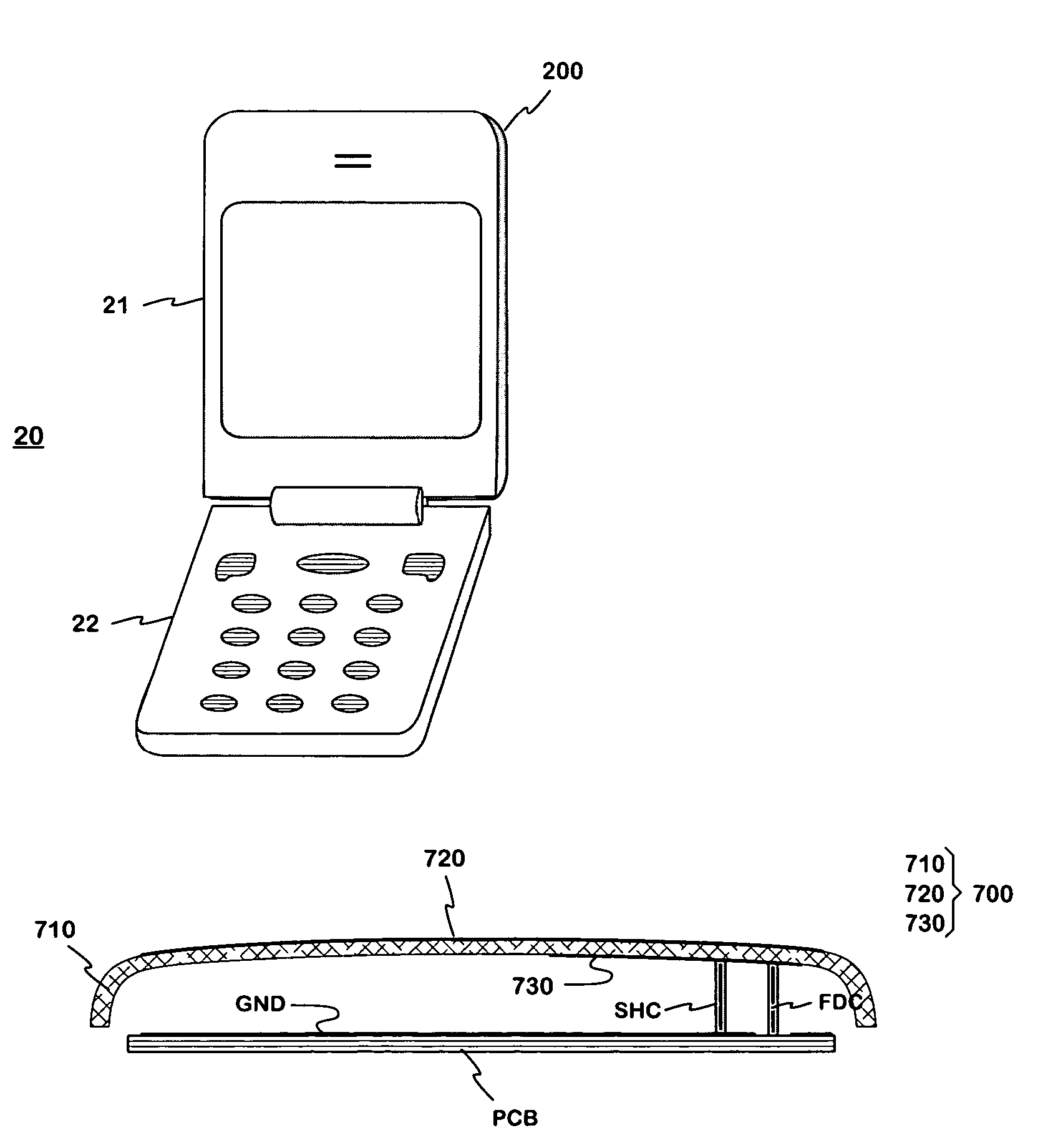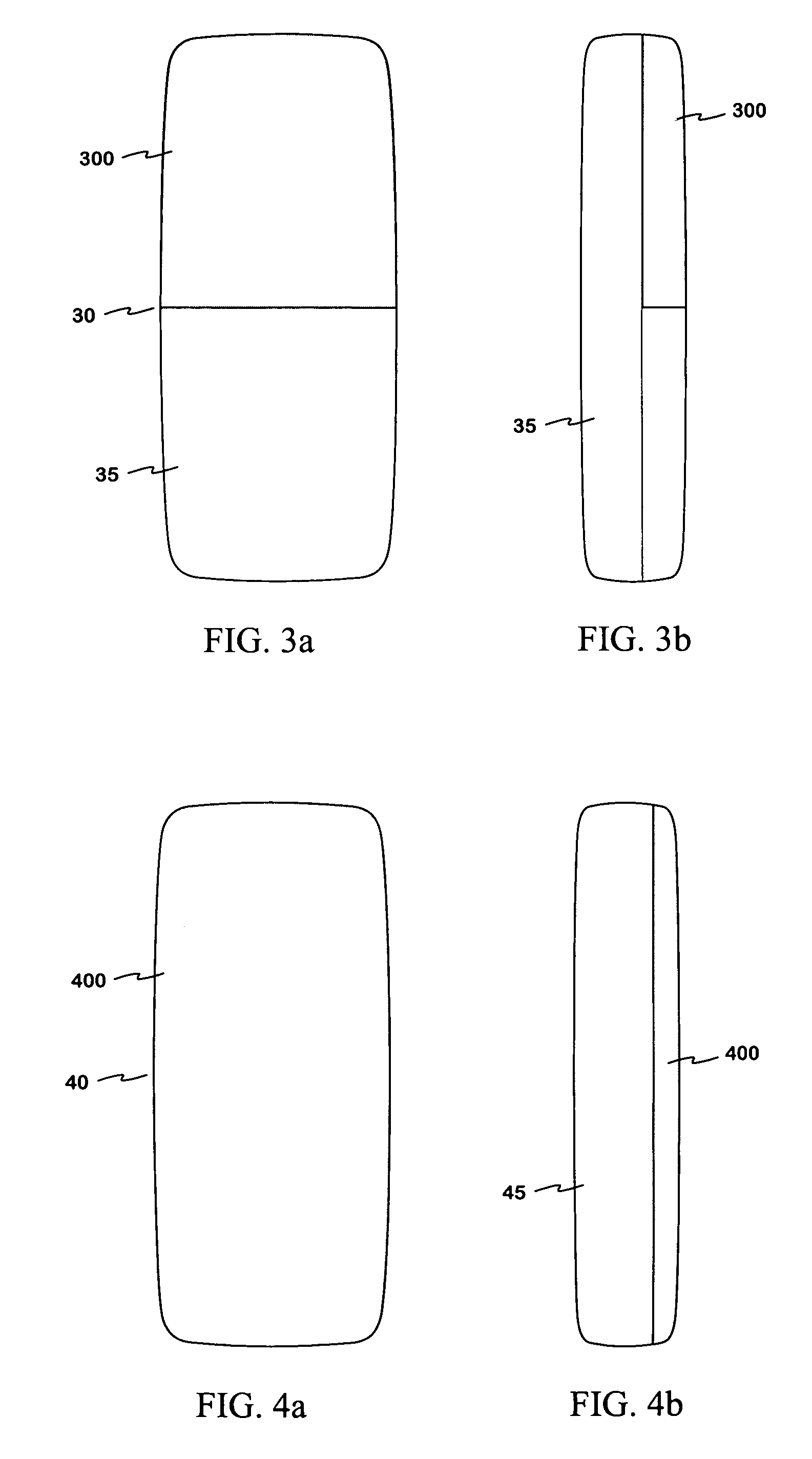Antenna element for a radio device
a radio device and antenna technology, applied in the direction of resonant antennas, shielding materials radiating elements, substation equipment, etc., can solve the problems of limiting the design of the element, increasing the design difficulty of the antenna, and worse electrical characteristics, so as to reduce the production cost of the radio device and improve the antenna radiation characteristics
- Summary
- Abstract
- Description
- Claims
- Application Information
AI Technical Summary
Benefits of technology
Problems solved by technology
Method used
Image
Examples
Embodiment Construction
[0022]FIGS. 2a and 2b show an example of a radiating antenna element according to the invention. The antenna element 200 belongs to a radio device depicted in FIG. 2a which in this example is a foldable communication device 20. The communication device has a first part 21 and a second part 22 which can be turned with respect to one another around a hinge located between them. FIG. 2b shows just the antenna element 200. This is a single conductive piece constituting the back side and relatively narrow lateral sides and the upper end side of the cover of the first part 21. It may be made of aluminum by extruding, for example. The size of the antenna element is not bound to the wavelength corresponding to an operating frequency. The element is large compared to a quarter of the wavelength, enabling good radiation and receive characteristics. The location of the radiator on the outer surface of the radio device has the same effect. In the end product, the antenna element 200 as well as ...
PUM
 Login to View More
Login to View More Abstract
Description
Claims
Application Information
 Login to View More
Login to View More - R&D
- Intellectual Property
- Life Sciences
- Materials
- Tech Scout
- Unparalleled Data Quality
- Higher Quality Content
- 60% Fewer Hallucinations
Browse by: Latest US Patents, China's latest patents, Technical Efficacy Thesaurus, Application Domain, Technology Topic, Popular Technical Reports.
© 2025 PatSnap. All rights reserved.Legal|Privacy policy|Modern Slavery Act Transparency Statement|Sitemap|About US| Contact US: help@patsnap.com



